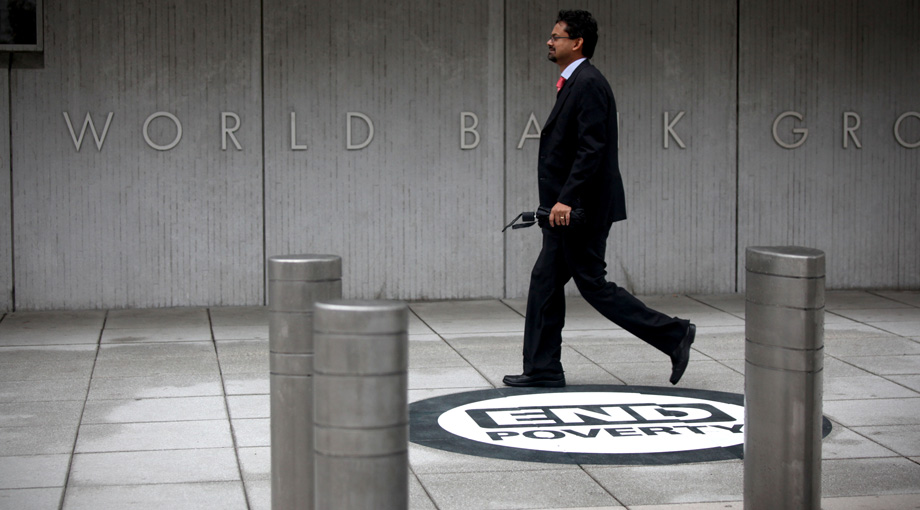World
Oxfam says $41 billion of the World Bank’s climate spending ‘effectively unaccounted for’ – ICIJ

The World Bank claims to have invested more than $100 billion in the effort to combat climate change. But a new report found that up to $41 billion of the bank’s spending on climate finance is impossible to track.
The Oxfam report, titled “Climate Finance Unchecked,” alleges that poor record-keeping practices at the World Bank make it “impossible” to verify its expenditures and impact on climate finance. The international lending institution publishes assessments of a project’s budgeted spending on climate finance, not how much money is actually spent. The report estimated the difference between budgeted and actual expenditures amounted to tens of billions of dollars over six years.
A senior World Bank official acknowledged to ICIJ that the institution should move toward calculating actual expenditures on climate finance, describing the current approach as a joint methodology used by all multilateral development banks. But the official disputed Oxfam’s estimate of the variance between budgeted and actual spending, saying that the real difference was far smaller.In recent years, the World Bank has touted its spending on climate finance and its plans to dramatically expand it. World Bank President Ajay Banga said in December that the bank had met its goal to devote 35% of its financing to climate three years ahead of schedule and set a new target of 45% by 2025. That goal is well within reach; the bank announced in September that its climate finance investments reached 44% of total financing, or $42.6 billion, over the past fiscal year. “We’re putting our ambition in overdrive,” Banga said.
Oxfam argues that it is impossible to verify such claims without more precise and transparent accounting methods. “It is clear that no one — including the Bank — has any real idea of how many billions of dollars are going to which climate actions,” the report said.
Oxfam also highlighted the lack of public information on how specific projects contribute to combating climate change. According to a separate report cited by Oxfam, more than 800 World Bank projects described as having climate finance components, nearly one-third of the bank’s climate portfolio during the period examined, had little or no justification for their climate benefits. The bank also regularly publishes multiple, conflicting figures on the funds spent on a project, and many assessments of completed projects are error-ridden or simply fail to report expenditures, according to the Oxfam report.
By analyzing over 180 projects, Oxfam concluded that the actual expenditure on a project typically differed from budgeted amounts by 26% to 43%. It used those figures to estimate that the World Bank’s claimed $104 billion in climate finance from 2017 to 2023, between $24 billion and $41 billion “is effectively unaccounted for.”
A senior World Bank official disputed those findings. “Look, we frankly scratched our heads to figure out how they got it so wrong,” the official told ICIJ.
The World Bank’s analysis found that projects on average disburse 95% of committed funds, the official said. Using Oxfam’s own methodology, which excludes some programs, the official said that projects disburse 90% of funds. The official also disputed the claim that assessments of completed projects were rife with mistakes, saying that any errors were not widespread.
The World Bank also started publishing “scorecards” that track the organization’s progress in combating climate change. Bank officials are preparing to confer with other multilateral development banks at the United Nations Climate Change Conference, which begins Nov. 11, to agree on which methodologies and indicators to use. “The real thing we should focus on is not so much how much money is going in, it’s actually the results that are achieved,” the official said.
The challenge of determining what counts as climate finance is not unique to the World Bank. Reuters reported last year that developed countries have adopted an expansive definition of the term as a way to claim credit for fulfilling their international commitments. Sometimes, this definition has expanded to the point of absurdity: A U.S. loan for a hotel expansion in Haiti, Italian financing for the opening of chocolate and gelato stores across Asia, and a Japanese loan for the construction of a coal plant in Bangladesh were all labeled as climate finance.
The World Bank contributed over half of all climate finance provided by multilateral development banks, according to the banks’ latest joint report, and its focus on the issue seems poised to expand in the years ahead.
For Oxfam, the bank’s centrality to climate finance makes its lack of transparency all the more troublesome. “These findings also make a mockery of the Bank’s claim to be focused on understanding the impact of its climate finance,” the report states. “[S]uch ambition is clearly impossible when we do not know, and cannot verify, the climate actions that have seen investment.”



.jpg)





